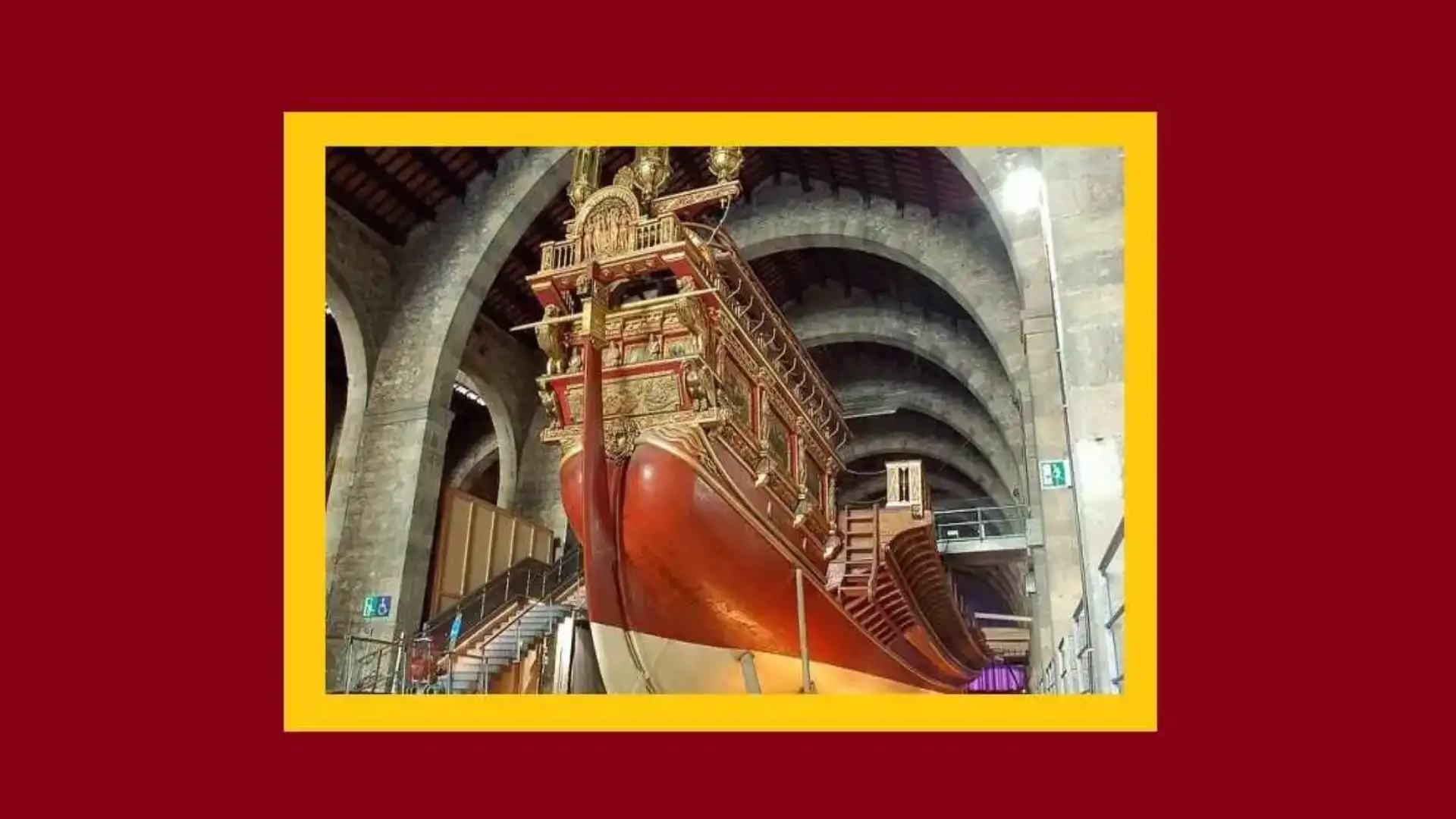
One of the jewels of the Maritime Museum of Barcelona: La Galera Real
One of the jewels of the Maritime Museum of Barcelona: La Galera Real

Since 1971 the Maritime Museum of Barcelona has shown a replica La Real, the galera of Juan de Austria in the Battle of Lepanto
In July 1571, Don Juan de Austria, Captain General of the Sea, embarked to Genoa, on board the royal galley, whose decorative program had been developed by the Sevillian humanist Juan de Mal Lara. The galley was conceived as an edifying and announcing work of the coming victory; it became the representative support of a political dream that yearned for Christian victory, projecting King Philip II towards the achievement of his universalist ambition. The constitution of the Holy League provided him with the opportunity to become the temporary guide of Christianity, the armed arm of God. The real galley was to live up to its political claims.
The Great Flag of the Caliph the symbol of victory in Lepanto
As a flagship, it was luxuriously decorated and painted in red and gold. His stern, was equipped with numerous sculptures, bajorrelieves and other ornaments, many of which were inspired by religious themes, which were commissioned by Juan de Mal Lara, a commission that he also fulfilled by writing a description of the stern of the royal galley of the serendious Lord Don Juan of Austria, the captain general of the sea. To narrate and build, such was the end of the discourse of paintings and sculptures, which combined action with sentence and placed the present of combat within the timeless truth of the victory of Good over Evil. In the light of his message, the royal galley had, however, an ephemeral existence.
The fighting that faced the Sultana of Ali Pachá was, according to the testimonies, a destructive violence. Back to Mesina she was visited by all the notable, jurors, gentlemen and gentlemen who were there, and already in the afternoon all the ships finally entered the port. The next day there was "an exultation of wonderful victory" because the fleet made its solemn entrance; the royal galley towed that of the Turk, as did all other Christian galleys with those of the defeated, whose flags had been arrived. To celebrate the victory, Don Juan offered a banquet that could not be held on board his galley, too damaged.
Only Andrea Doria's seemed to be quite intact for the occasion. Without precise dates or testimonies, the royal galley must have taken place in the port of Mesina before March 10, 1572, when Philip II announced to his brother the construction of a new galley of twenty-nine banks. On March 27, he told him that he would be ready at the end of April and that the decoration and sculptures would be made in Naples. The real galleys that happened to the new Argo probably never matched it, as the circumstances of this event required an exemplary representation.
Text: Barcelona Maritime Museum. For more information, we attach this PDF with a publication on the National Heritage.
© 2024 Nautica Digital Europe - www.nauticadigital.eu











